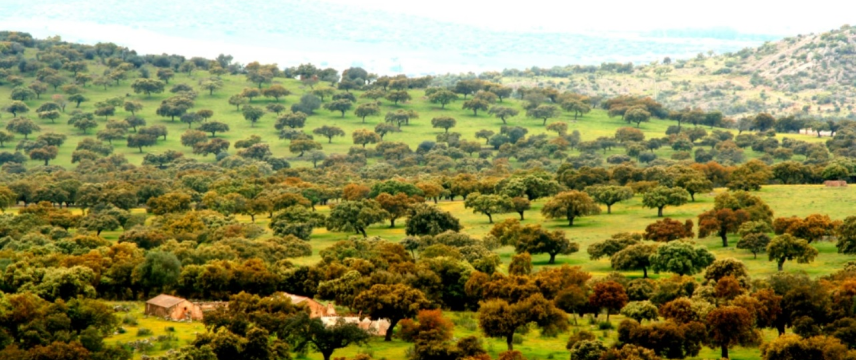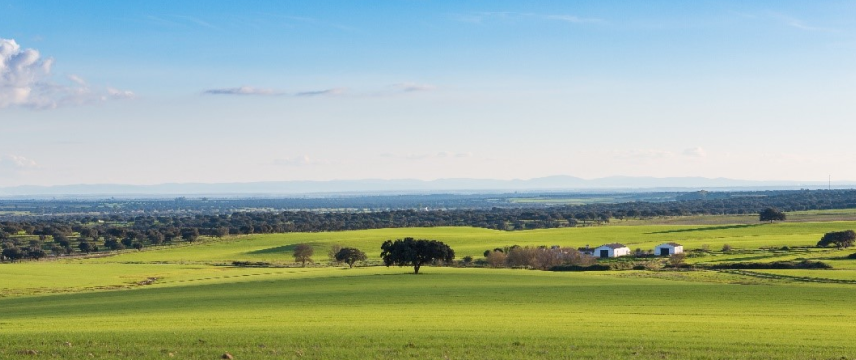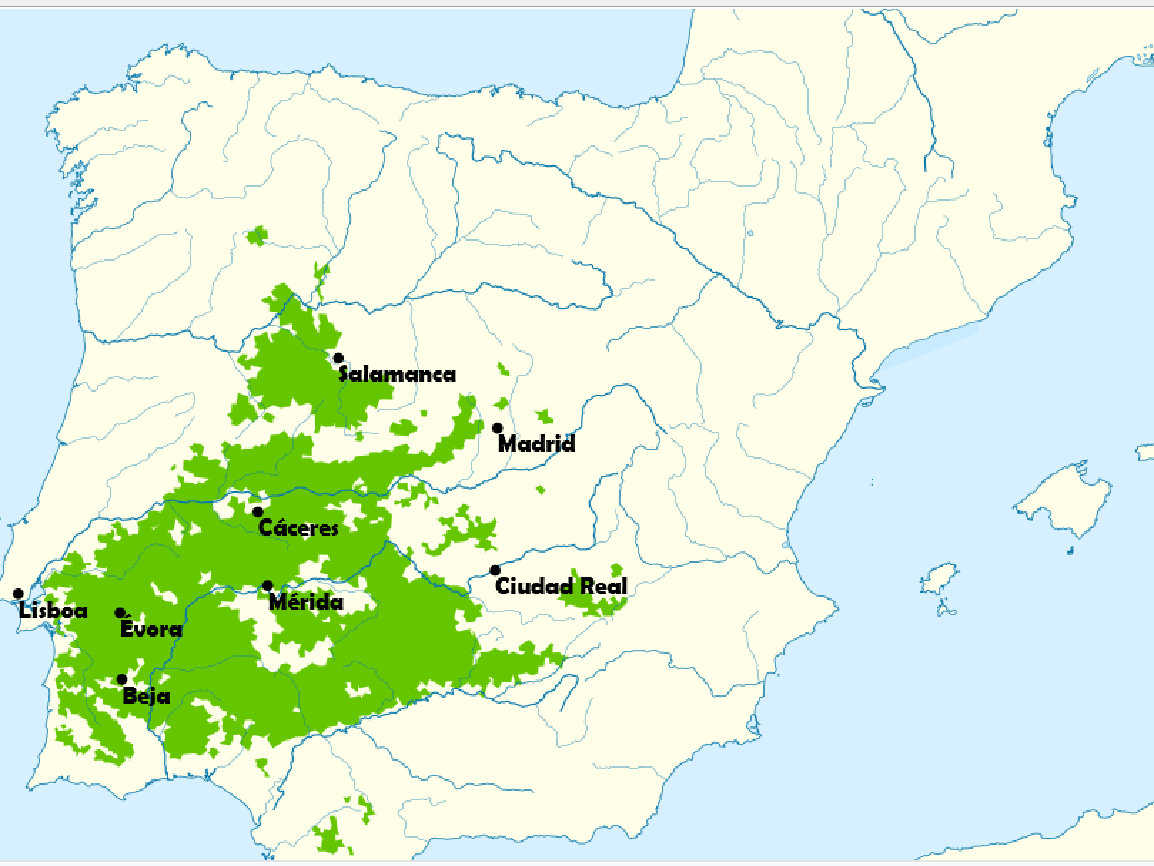Dehesa in Spain

The Iberian wooded pastures (dehesa)
The Dehesa is the most important woodland type in Extremadura (with approximately 1,300,000 hectares), representing 67% of the wooded forest area. It is an agrosilvopastoral system, whose main use is the sustainable exploitation of extensive livestock farming, used as a tool for conservation and improvement, with exploitation not only of the herbaceous pastures, but also of the "ramón" and the fruits of the woodland. But these wooded pastures can support other non woody agricultural uses such as hunting and forestry activities. The importance of Dehesas rests on both environmental and socio-economic values.
The Dehesa is considered a High Nature Value farming and forestry (HNV) system by the European Union as it groups together production models established on specific geographical bases, characterised by sustainable traditional management practices, to which recognisable environmental values are associated, and it is therefore a priority to maintain it in a favourable state of conservation.
This unique ecosystem of Mediterranean wooded pastures and forests with high biodiversity has been uninterruptedly exploited by man for about 40.000 years.

Communal pastures in the dehesa:
There is an ancestral tradition of sharing these communal goods for extensive livestock uses in Extremadura since medieval times, through direct exploitation by the local population in exchange for a rent. They may be public, of the municipalities or owned by a private company.
Over 25% of the Natura 2000 area in Extremadura is Dehesa.

Dehesa in Spain
Challenges for this land type
- Lack of regeneration is unanimously considered to be the major problem for the persistence of Dehesa systems (San Miguel, 1994; Pulido et al., 2003a). This is caused by incompatible uses, such as heavy livestock grazing, rotational cropping or burning. Other limiting factors related to the lack of suitable habitats for acorn-dispersing animal species have also been identified (Pulido et al., 2003b).
- Another important problem is the "La Seca disease", which affects at least 5% of the Dehesa in Extremadura (CICYTEX, 2016). This is a complex process involving various fungi and other pathogens that affect trees under stress.
- Animal health problems, with an increase in diseases such as tuberculosis, aggravated by the coexistence of wild and domestic species.
- Problems of lack of specialised workforce, which is able to master the varied and multiple functions that the different uses of the Dehesa require.
Who is affected?
The market does not generally value the quality of DEHESA products, which is why their owners are being forced to make a living from activities unrelated to the exploitation of their farms, which leads to their abandonment, turning the dehesas into territories that do not generate productivity or employment, other than that which is strictly necessary.
Solutions to this situation could include publicising the economic and cultural importance of the Dehesa in national and international forums; promote commercial products whose quality is linked to the proper management of the Dehesa; and contribute to a better scientific-technical knowledge of the Dehesa that allows existing risks to be combated with rigorous information.
Furthermore, all the actors of the quadruple helix through active participation in the different sectoral strategies and plans that are envisaged for the 2017-2030 period in Extremadura are affected:
- The institutions have the responsibility to provide a large part of the guidelines and resources that regulate the transition process;
- Farmers and livestock producers must undertake far-reaching reforms in the production and farm management model, incorporating sustainable productivity, advances in measures to adapt to climate change, product innovations, the implementation of new technologies and the use of new trends in sustainable and responsible consumption;
- Citizens and their representative organisations, within the framework of participatory regional and local development strategies;
- Research and academic agents, who explore the development or implementation of new products and services and have the resources to finance research personnel, must contribute to the transfer of their research results.

Possible solutions
- Passive restoration methods that promote regeneration by mimicking natural processes.
- Implementation of government-supported artificial regeneration programmes in areas where the tree population has declined or disappeared and in those Dehesas with unbalanced tree age classes.
- Facilitate relations between research centres and DEHESA owners for the transfer of new knowledge.
What citizens can do
The human activity has had a decisive influence on its formation and is also essential for its future. As aforementioned, citizens must make high-value contributions within the framework of participatory regional and local development strategies.
It is necessary that citizens are more familiarised with the DEHESA as well as with the services it supplies (besides those purely associated to food production). At this point, Public Policies can play an important role in promoting this type of land use.